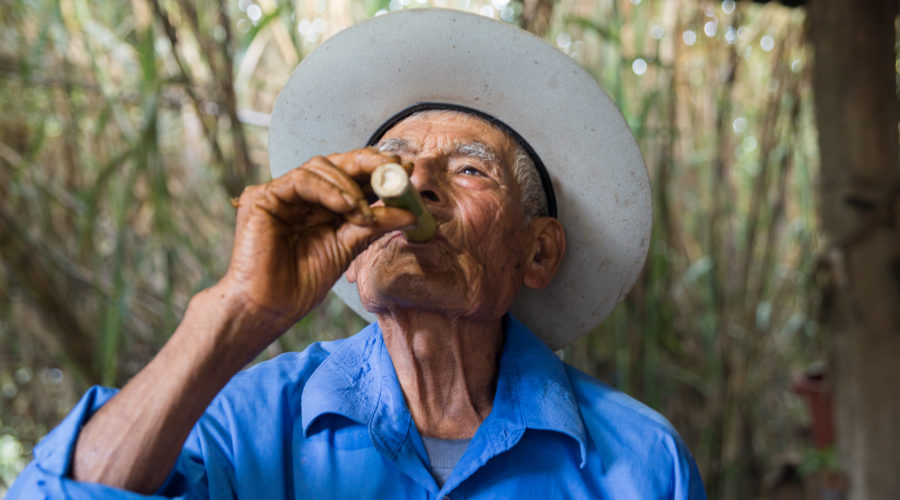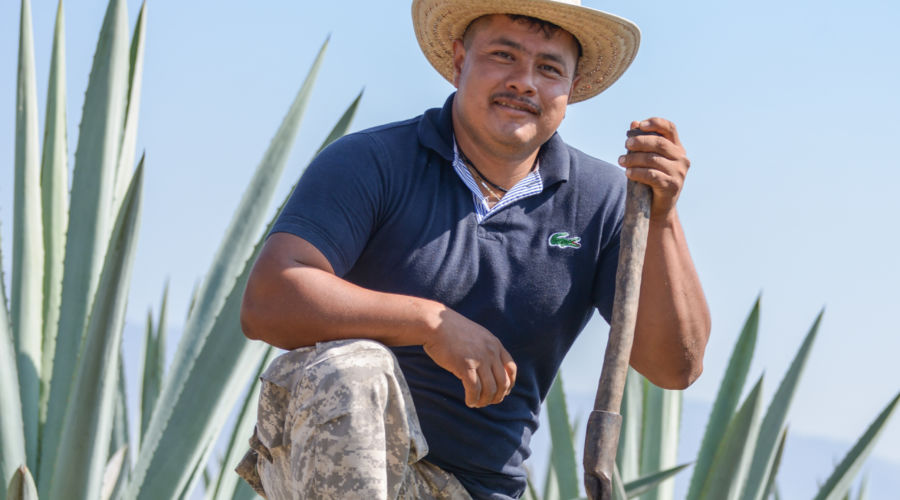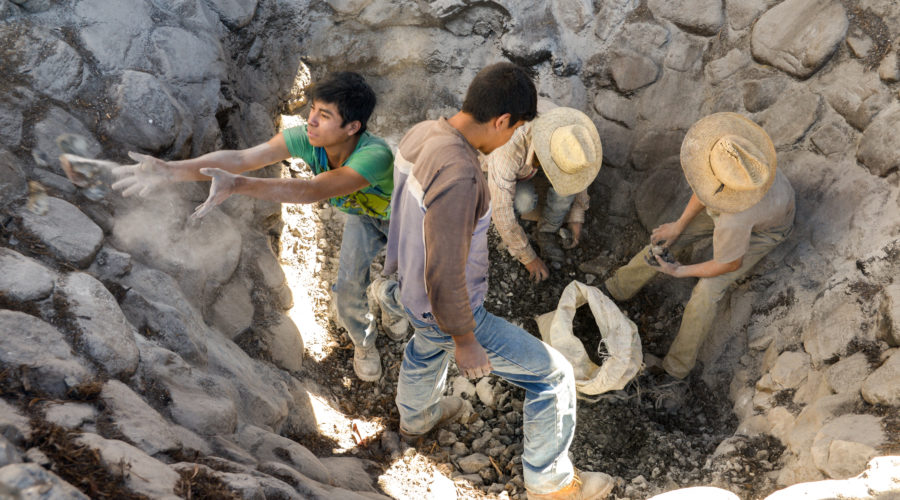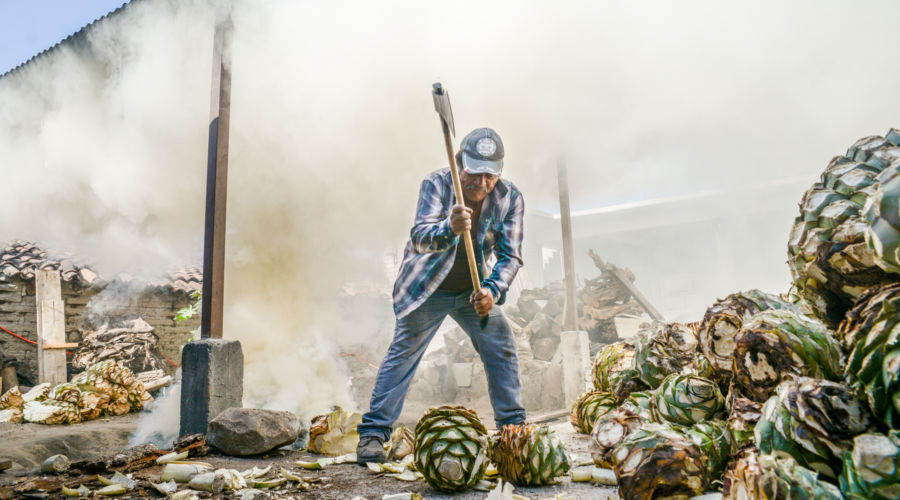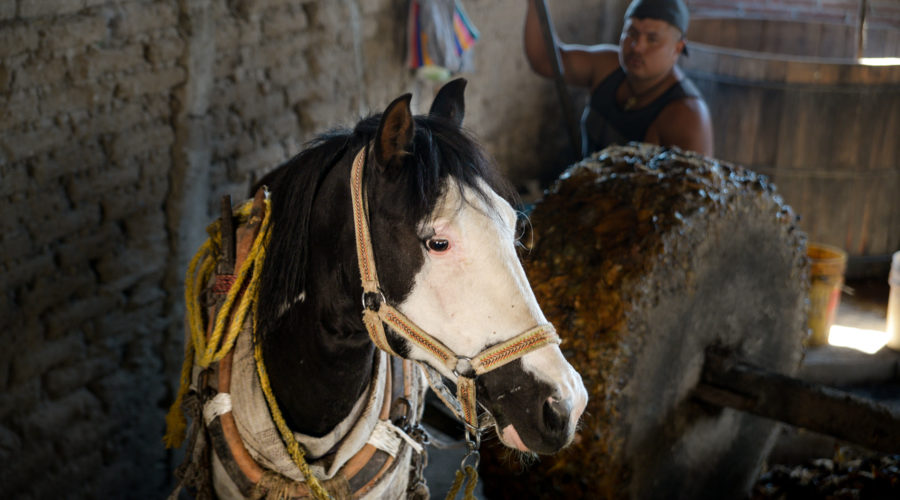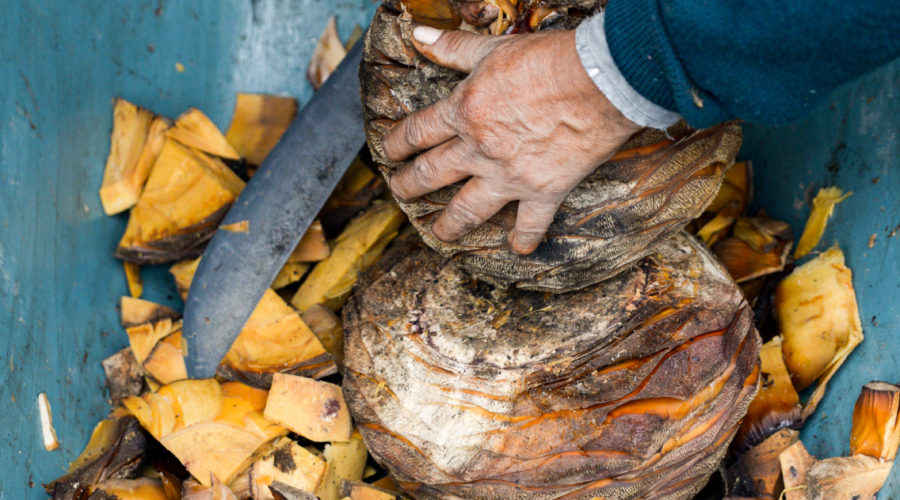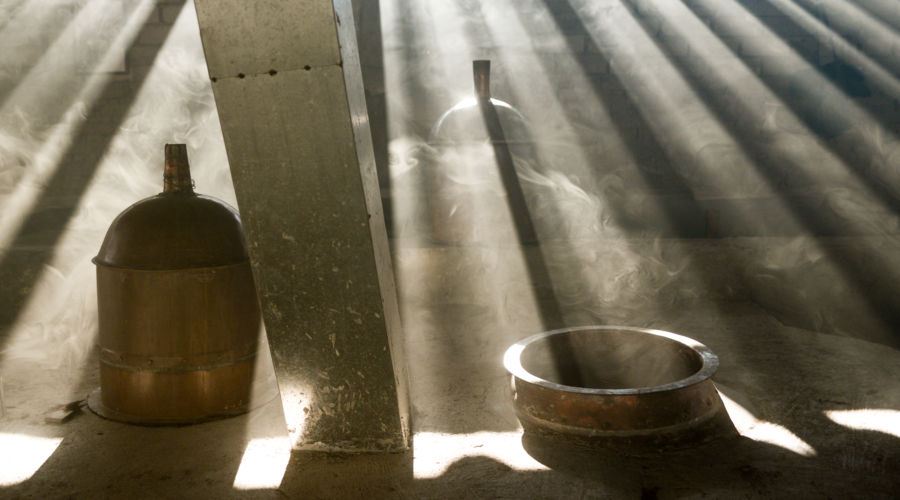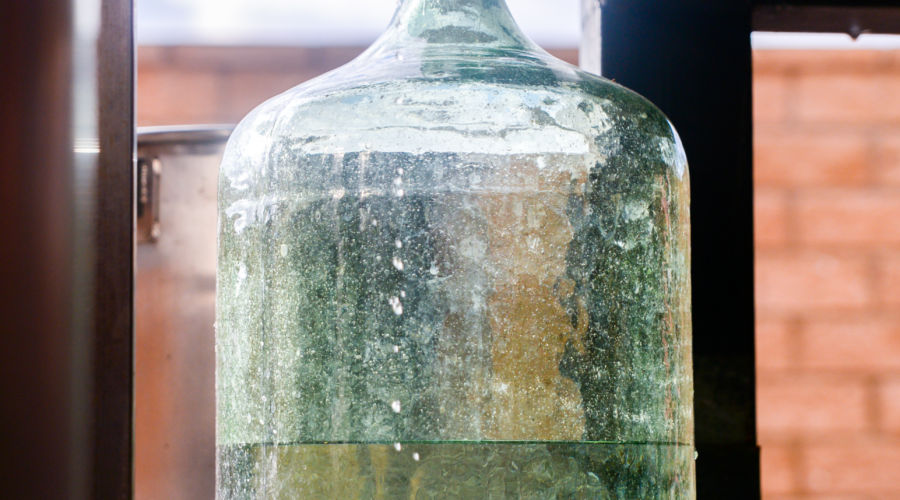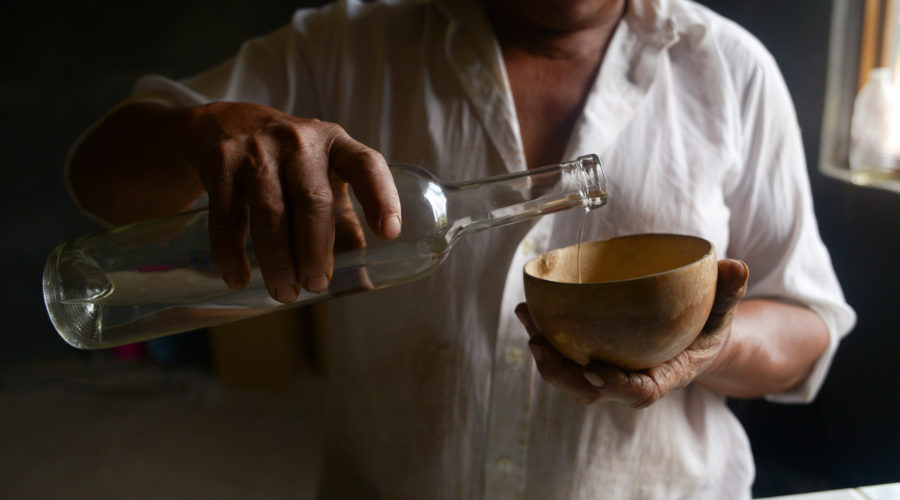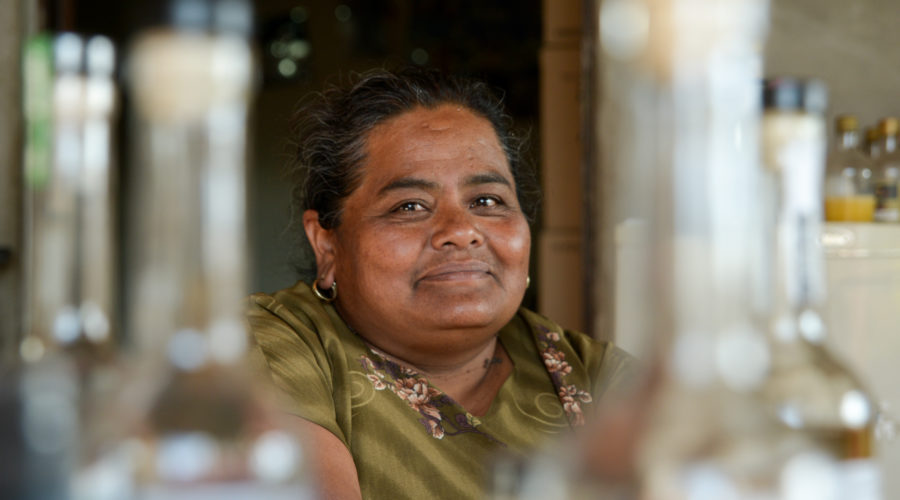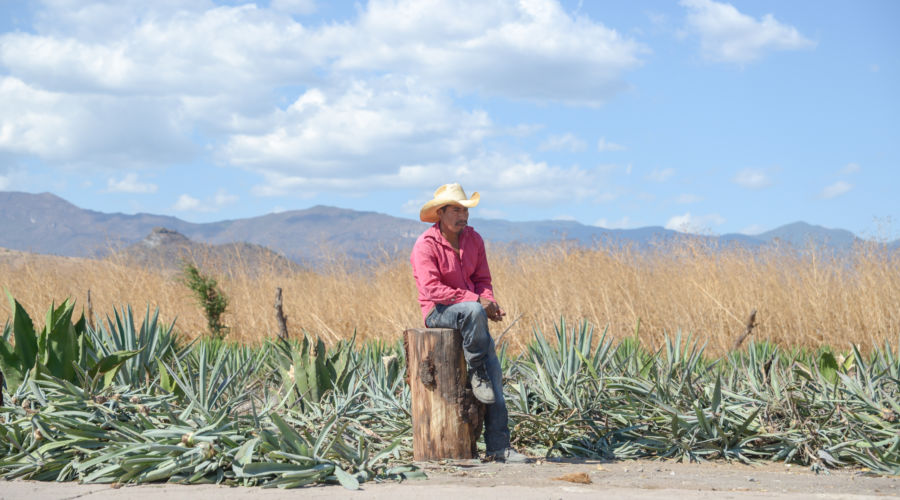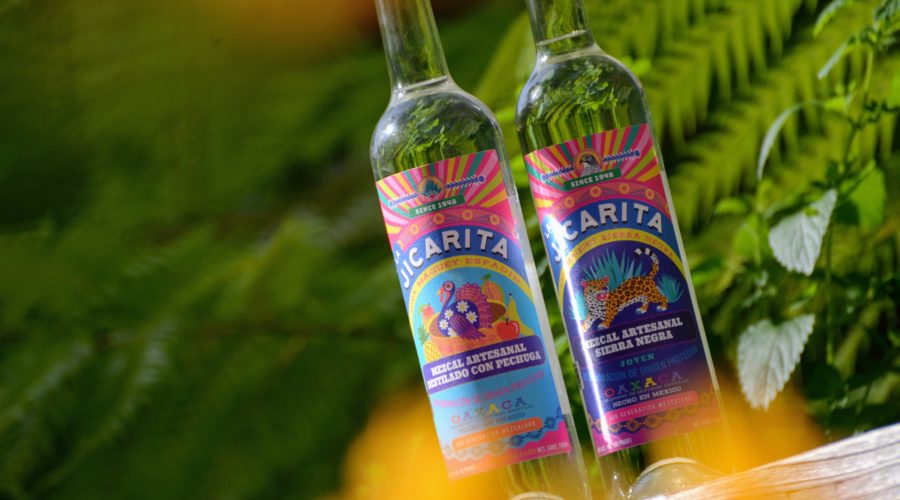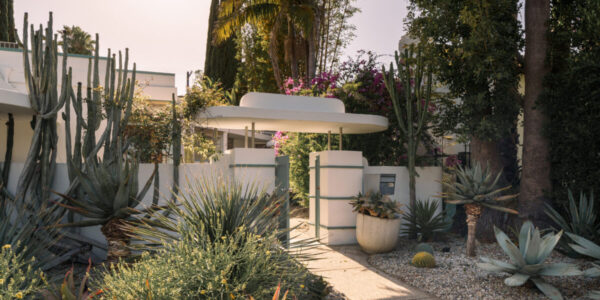Anna Bruce
Smoky Sensation
I’ve lived in Oaxaca, photographing distilleries, for the past six years, which has given me a chance to see the great variety of production that goes into mezcal. Although there are wonderful maestros making this spirit in other Mexican states, Oaxaca is often cited as the heartland of the smoky spirit. From side-of-the-road operations to more formal production facilities, I have witnessed the industry’s evolution. It is an exciting and challenging time for young mezcaleros, entering their product into a competitive, international spirits market while learning to adhere to the rigorous certification regulations that are still evolving. As the category gets more popular in Mexico and abroad, there has been a push and pull between industrial growth and protecting the artisanal character of the liquor. Fortunately many brands and mezcaleros are keen to invest in creating a product that is sustainable, from recycling waste elements to planting more agave and preserving seeds. Follow along as I share scenes from the production process at Oaxacan distilleries, typically called palenques or fabricas de mezcal.
Anna Bruce
Harvesting Agave
Pedro, a fourth generation mezcalero, is seen harvesting agave in the fields outside Matatlan, Oaxaca. This is hard work. The thick, spiky leaves need to be hacked off with a machete before the heart, or piña, can be collected. It is only this part of the plant that is used in the making of mezcal, as it is where sugar is stored.
Anna Bruce
Digging the Oven
The cut agave is then cooked in a horno (pit oven), which workers here are preparing in San Catarina Minas, Oaxaca. This is the traditional kind of oven you find in distilleries throughout Oaxaca state. Stones are placed over the fire before cut agave is piled in as high as the oven is deep. Earth and logs are piled over the agave to trap the heat and smoke produced, eventually lending the mezcal its smoky flavor. Other states have different methods, often cooking in ovens above ground.
Anna Bruce
Chopping the Piñas
Agave gets cut for an oven in the Oaxacan town of Santiago Matatlán, a.k.a. the “World Capital Of Mezcal.” This process usually starts early in the morning while temperatures are cool, as the task is labor-intensive and needs to be completed in one go. It is a dramatic sight as workers use axes and machetes to break up the huge piñas before throwing them into the oven.
Anna Bruce
Crushing the Agave
Once the agave is cooked, a tahona, or heavy stone mill, is used to crush it. The pulp is then put into a fermentation vat and left to ferment for about a week. Here, the tahona is pulled by a horse, but often it is pulled by a burro, donkey, or oxen—or even mechanized in more modern facilities. In some distilleries, however, the cooked agave is cut and mashed by hand, placed in cow-hide fermentation vats, and then stored in clay stills to make small-batch, “ancestral-style” mezcal, in which all elements of the production process are done according to pre-Hispanic methods.
Anna Bruce
Chopping Cooked Agave
Here, a worker manually chops cooked Papalotmetl, an agave found in the Mixteca region of Oaxaca. There are over 40 different types of agave used for mezcal, each giving a different flavor based on variety, terroir, and age. After agave has been cooked, it is very sweet. In fact, the popular agave sweeteners you see on market shelves are made from the syrup pressed out of agave plants heated at low temperatures.
Anna Bruce
Fermentation and Distillation
The artisanal category is strictly regulated to prevent an industrialization of the process. Here, Don Celso’s distillery in Santiago Matatlan is an example of a medium-sized artisanal production. It uses copper distillation tanks known as alambiques and wooden fermentation vats. The spirit comes out of the bottom of the tanks, and is usually double- or even triple-distilled.
Anna Bruce
Aging the Mezcal
Mezcal is often stored in beautiful, old glass demijohns like this one in Santiago Matatalan. Mezcal aged this way instead of in barrels is called madurado, or matured. Typically anything labeled “Madurado,” “Matured,” or “Aged in Glass” will have been aged for more than twelve months.
Anna Bruce
Tasting the Spirit
Workers commonly share a mezcal, or several, during a day’s work at the distillery. It is typical to drink mezcal out of a jicara, or gourd, made from the fruit or the calabash tree. This open-mouthed vessel is perfect for opening up the spirit to the nose and palate for tasting.
Anna Bruce
Industry Women
More and more women are taking the lead in mezcal production, especially amongst the new generation of mezcaleros. Don Celso’s wife, Lorena (pictued), is a wonderful maestra of mezcal. She works with her husband at their distillery in Santiago Matatlan, managing bottling and keeping guests happy with strong pours.
Anna Bruce
Giving Back
Agave plants only flower once in their lifetime, and the plant uses a substantial amount of energy to produce the blossoms. For the purpose of making mezcal, these agave need to be cut so the plant does not waste energy on flowers, instead retaining it for sugar production in the heart of the plant. Many mezcal producers are working with sustainability in mind, replanting wild varieties of agave. To this end, they create an agave nursery where they will grow the plant for several years in a domesticated setting until it is hardy and can be replanted in more wild conditions.
Anna Bruce
Raise a Glass
Made by Don Celso and family, artisanal La Jicarita mezcal has a name that pays homage to the shallow gourds traditionally used to taste.
